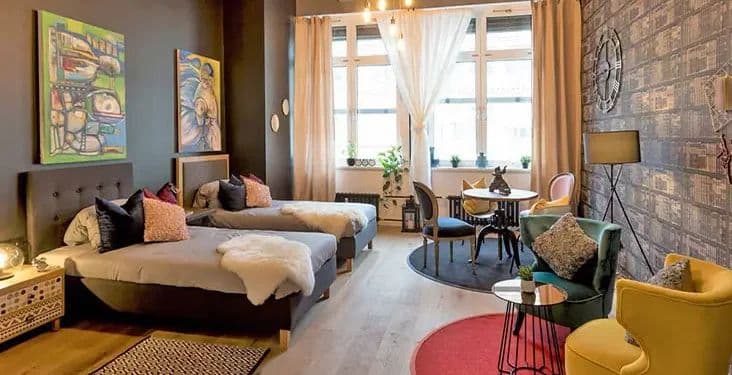The Rise of Co-living Spaces in Indian Cities
Summary
Co-living is booming in Indian cities, offering affordable, flexible, and community-driven housing for urban migrants. It addresses rising property prices and fosters social connections, redefining urban living in 2025.

In the past decade, India’s urban housing landscape has seen a dramatic transformation. Rising property prices, shrinking living spaces, and rapid urban migration have created a need for innovative solutions in residential real estate. Among these, co-living has emerged as a game-changer. Once considered a niche housing option for students or young professionals, co-living spaces are now becoming a mainstream phenomenon, especially in metropolitan cities like Mumbai, Bangalore, Pune, and Delhi-NCR. By combining affordability, flexibility, and community living, co-living is redefining the way urban Indians experience housing in 2025.
Understanding Co-living
Co-living is essentially a shared housing model that combines private living areas with communal facilities. Unlike traditional rental accommodations or hostels, co-living provides fully furnished apartments, modern amenities, and a professionally managed environment. Residents enjoy private rooms but share communal spaces such as kitchens, lounges, workspaces, gyms, and entertainment areas. The rental cost often includes utilities, maintenance, internet, and sometimes even meals, simplifying life for urban dwellers who otherwise juggle multiple bills.
Beyond affordability, co-living emphasizes community and interaction. Social events, workshops, networking opportunities, and recreational activities create a sense of belonging. For many young professionals and students who move to new cities for work or education, co-living offers both a home and a social ecosystem, addressing the isolation often associated with city life.
Why Co-living Is Booming in India
Several factors are driving the rise of co-living in India.
1. Urban Migration and Rapid Population Growth
Cities like Bangalore, Mumbai, Pune, and Delhi-NCR continue to attract thousands of migrants daily, drawn by job opportunities, education, and better living standards. This influx creates immense pressure on the rental housing market. Many newcomers struggle with high rents, long-term lease agreements, and limited options. Co-living provides a ready-to-move, cost-effective solution that meets the needs of this transient population.
2. Rising Property Prices
Real estate prices in India’s metropolitan cities have surged, putting homeownership beyond the reach of young professionals. Co-living offers a more economical alternative where residents can live in prime locations without compromising on amenities or lifestyle. Shared costs make it easier for residents to manage budgets, while also reducing financial risk compared to renting an independent apartment.
3. Flexibility and Short-Term Leasing
Unlike traditional rental homes that often require a one-year or more commitment, co-living operators offer flexible lease options ranging from a few months to a year. This flexibility is ideal for professionals who frequently relocate for work, interns, or students. The hassle of deposits, maintenance, and utility setup is often eliminated, making co-living a highly convenient choice.
4. Community-Oriented Living
Co-living spaces are designed to foster interaction and social engagement. Shared amenities, group activities, and organized events help residents build networks, friendships, and professional connections. This aspect is particularly appealing to millennials and Gen Z residents who value experiences and community over isolation. For many, co-living is not just housing; it’s a lifestyle.

5. Emerging Investment Opportunity
Co-living is not just a boon for tenants; it is becoming a lucrative model for investors and developers. The sector promises high rental yields, predictable occupancy rates, and scalable business models. Developers can repurpose existing buildings or design co-living-specific projects to cater to growing demand, ensuring steady cash flows. In metro cities where demand for affordable, flexible housing is high, co-living presents a profitable avenue for real estate growth.
Popular Co-living Hubs in India
Several cities have emerged as hotspots for co-living due to job density, educational institutions, and high urban migration:
Bangalore: With its booming IT sector, areas like Whitefield, Koramangala, and HSR Layout see high co-living demand among tech professionals.
Mumbai: Soaring property prices make co-living a practical choice in Bandra, Andheri, Powai, and Lower Parel.
Pune: Students and IT professionals gravitate toward co-living in Hinjewadi, Kalyani Nagar, and Magarpatta.
Delhi-NCR: Gurgaon, Noida, and South Delhi have co-living options for corporate employees seeking proximity to office hubs.
Hyderabad and Chennai: Emerging IT and educational centers where co-living is rapidly filling rental housing gaps.
Challenges in Co-living
Despite its popularity, co-living has some inherent challenges:
Privacy Concerns: Shared spaces may not suit everyone, particularly families or individuals who value solitude.
Quality Control: The rapid growth of co-living has led to variation in service standards. Choosing reputable operators is crucial.

Regulatory Framework: Real estate laws are still catching up with co-living models. Tenants and investors must be aware of legal compliance.
Market Saturation: With increasing developers entering the segment, certain areas could see oversupply, affecting rental returns.
The Future Outlook
Experts predict co-living will continue to expand across India in 2025 and beyond. Its appeal is broad, spanning students, young professionals, and even short-term relocators like NRIs and corporate travelers. Developers are integrating co-living with mixed-use projects, including coworking spaces, retail outlets, and entertainment hubs, creating vibrant ecosystems. Technology plays a vital role in managing bookings, maintenance, and resident engagement, improving efficiency and scalability.
The rise of co-living aligns with modern lifestyle trends, such as remote work, urban mobility, and community-oriented living. As millennials and Gen Z dominate urban populations, demand for flexible, social, and affordable housing options will only grow. Co-living is no longer a temporary trend—it is reshaping urban housing norms in India.
Key Takeaways for Tenants and Investors
Co-living offers affordable, flexible, and community-friendly housing, ideal for urban migrants and young professionals.
Developers can benefit from high rental yields and predictable occupancy, making co-living a profitable investment model.
Tenants should research location, amenities, operator reputation, and lease terms before choosing a co-living space.
The future growth of co-living will be driven by urbanization, changing work patterns, and lifestyle preferences.
In conclusion, co-living spaces in India are revolutionizing the way people live, work, and socialize in cities. Offering a perfect blend of affordability, convenience, and community, co-living addresses critical urban housing challenges while providing a lifestyle solution tailored for modern residents. As India continues to urbanize and younger populations seek more flexible living options, co-living is poised to become a central feature of the country’s real estate landscape.
Summary (100 Words)
Co-living spaces are reshaping India’s urban housing market by offering affordable, flexible, and community-focused living. Ideal for students, young professionals, and transient workers, co-living combines private rooms with shared amenities like lounges, kitchens, and gyms, along with bundled services such as utilities and maintenance. Popular in metros like Mumbai, Bangalore, Pune, and Delhi-NCR, co-living addresses high property costs, urban migration, and changing lifestyle needs. Investors benefit from high rental yields and steady occupancy, while tenants enjoy convenience and community. With urbanization, remote work, and lifestyle changes, co-living is set to grow further, becoming a mainstream housing solution in 2025.
